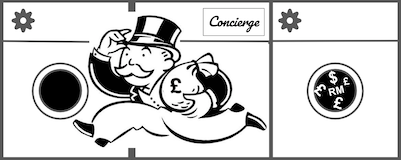
Samling, the giant logging company owned by the timber tycoon Yaw Teck Seng and favoured with numerous timber licences by the Chief Minister, Abdul Taib Mahmud, was at the heart of the housing bubble that led to the sub-prime mortgage crisis and the world economic crash, according to our exclusive research.
We have established that Mountain House, a major new-town development in San Joaquin California, currently labelled as the ‘epicentre’ of the housing crash, was a Yaw family project.
How US ‘Dream Homes’ became ‘Mortgage Nightmares’
Started in 2001, Mountain House was originally advertised as “The Town of Tomorrow” and “The American Dream Made
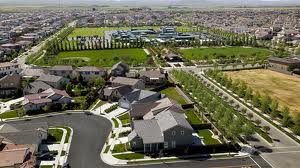
Reality” with houses selling for over $800,000, mainly through sub-prime mortgages. But, in the aftermath of the crash, the part-built project has been abandoned by the original developer and the town has been identified as the most “underwater” community in America, with over 89% of the properties now worth far less than the amount of money borrowed to buy them.
The prices of these houses are now half what they were in 2006, leaving buyers in a repossession nightmare.
From environmental devastation in Sarawak to economic devastation in the US

Samling’s extraordinary involvement at the centre of the world’s greatest financial scandal was the culmination of years of massive investment in real estate across the United States, according to our research. This investment came out of the profit from logging in Sarawak under heavily criticised permits granted by the Chief Minister and Resources Planning Minister, Abdul Taib Mahmud.
Following last week’s condemnation of Samling Global by the Norwegian Government as an ‘unethical’ company, involved in ‘illegal logging’ and ‘environmental devastation’ in Sarawak, we reported how a Yaw family subsidiary, CSY Investments, had passed two multi-million dollar mansions to the Taib family in Seattle, in what appeared to be an unrecorded property tranfer linked to a US $1 dollar Quit Claim deal.
‘Unethical’ and over in the US
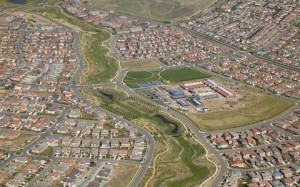
We can now further reveal that CSY Investments formed just part of a multi-million dollar web of Yaw-owned companies in the United States, primarily involved in property development. These companies were subsidiaries and affiliates of SunChase Holdings Inc, a California registered company incorporated in 1988 by Chee Siew Yaw, a son of the Samling boss.
With Chee S Yaw as its original President and Chief Executive, SunChase Holdings has been involved in a number of massive land-deals across the USA, including “the largest real estate partnership ever formed with the U.S. Government”, according to its own publicity.
The registered shareholder of SunChase Holdings was, until recently, Universe Limited, a Liberian company, which according to an investigation by the US Securities and Exchange Commission (SEC), was “controlled by Hiew Tek Seng and the Yaw family, all citizens of Malaysia”. The companies and subsidiaries linked to SunChase Holdings are mainly operated out of Phoenix, Arizona.
![98-0716e5_SunChase_Yaw[1]](/wp-content/uploads/imgcache/2010/09/pImg_6981a54398807acea0d1ffb5164b1fe8.jpg)
Deep pockets that fuelled the Housing Bubble
SunChase Holdings has clearly been exceptional among United States development corporations in possessing an extraordinary level of shareholder capital from the very beginning. Straight after graduating from California State University, Sacramento, with a BSc in Real Estate, Land Use and Finance in 1986, the youthful Chee S Yaw immediately demonstrated his access to enormous sums for investment.
One his first subsidiary ventures was Trimark Communities LLC, set up in July 1988, with himself as President. This became the company behind the disastrous Mountain House town project. Documents released by San Joaquin County state that between 1990 and 1992 Trimark bought over 70% of the 7.8 square mile site outright and began seeking approval for an approximately half billion dollar development project comprising the largest housing scheme in California.
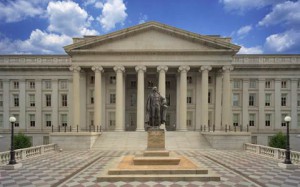
Approval was finally granted after two decades of lobbying and in the face of lawsuits filed by the State Department of Fish and Game over environmental concerns (environmental battles being nothing new for Samling). Meanwhile, SunChase had impressed the authorities with numerous other grand-scale projects in which it played the main investor. The company claims it specialises in building ‘large-scale, master-planned communities’ and ‘managing distressed real estate assets’ (repossessed property).
In particular SunChase emerged as the top bidder for Resolution Trust Corporation (RTC) land auctioned off by the US Federal Government in the aftermath of the Savings and Loans crisis of the late 80s. The National Land Fund set up partnerships between the Government and private investors to take control of billions of dollars worth of ‘distressed real estate assets’ offloaded by troubled lending companies, usually at rock-bottom prices. Sunchase was the biggest private investor in the scheme, obtaining $2 billion of assets, according to the company.
A Federal Audit Report issued in 1999 confirms, “In April 1993, the RTC selected SunChase Holdings, Inc., as the winning bidder for five of the six pools of assets offered in the National Land Fund I initiative”.
Indeed, Sunchase currently boasts:
“The company is proud of its heritage as the managing general partner in the National Land Fund, the largest real estate partnership ever formed with the U.S. Government”.
American Dream turns to a nightmare with Samling
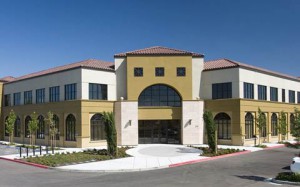
Mountain House finally gained planning permission on the basis that it promised to create a sustainable, self-contained new town that would create sufficient jobs for its inhabitants.
The original county Master Plan promised affordable housing to meet the Bay Area housing crisis, together with retail and business outlets. But from the start sceptics pointed out that the project looked more like a ‘get-rich-quick scheme’ by the developer with little provision for real employment.
Indeed, the promotional material by Trimark Communities clearly targeted the aspirations of middle-class Californians looking for grander accommodation in an area of housing shortages. The company marketed Mountain House, as the American Dream in the Town of Tomorrow, promising traditional-style, detached houses built around 14 separate ‘village’ settings, each with a school, leisure centre, open spaces and commercial heart for business enterprises. Although the San Joaquin authorities had understood that houses would be priced around an affordable $200,000, the demand for grander homes and the availability of dubious lending mechanisms and sub-prime loans meant that prices before the crash in 2007 were topping four times that amount.
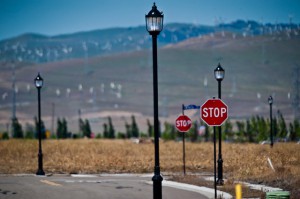
Within weeks of the crash all had changed. 16,000 houses were supposed be built, providing accommodation for 44,000 people, in the most ambitious development project in California for decades, but as the lending market collapsed, the Yaw family pulled out. Trimark Communities was dissolved in California and Chee Siew Yaw has returned to the Far East, claiming that he divested all his US interests in 2006. As a result, Mountain House has been left part-constructed and famous for being the repossession capital of the USA.
The main losers in the disaster have been the thousands of buyers who lost their their homes and the California Public Employees Retirement Scheme (CalPERS), which had invested heavily in the project on behalf of its future pensioners. CalPERS is believed to have lost $926 million of the value of its orignal $1.2 billion investment in the project. Those people who have remained in Mountain House have found themselves paying huge mortgages on low-value properties in a part-built town. According to one description:
“Landscaped lawns face fields of weeds. Sheep graze on the future golf course. While two schools [out of a promised 14] have been built and a third is under way, there’s just one retail business, a convenience store. The closest supermarket is five miles away. A multimillion-dollar bridge — designed to link the southern and northern halves of town — has been fenced off. It’s our bridge to nowhere”.

So, like the indigenous people of Sarawak, the people of Mountain House are now living with the devastation wreaked on their lives by Samling. According to one, “all they did was build as many houses as they could as quickly as possible to cash in on profit before the bubble burst”.
Samling back in Sarawak
In 1991 a study by the World Bank concluded that only a fraction of the possible revenue that could have been raised from timber was coming to the State of Sarawak.
The problem was described as a major ‘leakage of public resources’, which explains why the people of Sarawak have received few benefits from the loss of their valuable rainforest and remain among the poorest in Malaysia. Chief Minister Abdul Taib Mahmud has signally failed to rectify this problem of disappearing assets, meanwhile Samling has developed the resources to become one of the major players in United States real estate.
![penan-jungle[1]](/wp-content/uploads/imgcache/2010/09/pImg_763c30fc36bfec69d5059df20ca40b15.jpg)
The company has been notorious for its ruthless and unsustainable practices in Sarawak, as detailed by the Norwegian government report. Licensed by Taib, it has ripped out vast tracts of the world’s most ancient rainforest, leaving the indigenous people with little or no compensation.
These forced acquisitions of Native Customary Rights Lands have recently been ruled illegal by the Federal Court, but neither the company nor the Chief Minister Taib Mahmud have chosen to notice.
Just this week Samling demonstrated familiar ruthless tactics when managers were reported to have threatened native leaders to withdraw the numerous complaints of rape against women and young girls in the company’s concession areas, or else they will end all transport links. Taib’s government has likewise refused to investigate the reported crimes, despite widespread evidence and several independent reports.
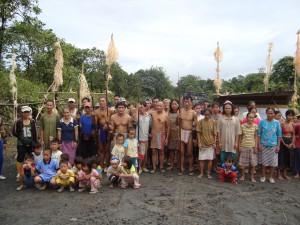
Lately, the company, backed by armed police, has torn down more road blockades set up by the beleaguered Penan tribe (who are Asia’s last jungle nomads) in an attempt to protect their few remaining square miles of virgin forest and key hunting grounds. Samling are now boring into the region, which the Penan recently proclaimed as a protected Peace Park
Finally – Sterling Pacific Assets
Interesting questions still surround the transfer of the Yaw holdings in the United States. Following Chee S Yaw’s pronounced divestment of his US assets, Sunchase Holdings was transfered to the current ownership of Sterling Pacific Assets Inc (California).
Yet Sterling Pacific Assets was already part of the SunChase Group and had previously been described as ” an affiliated professional services company” in Sunchase promotional material. The 100% shareholder of Sterling Pacific Assets of is one of the SunChase’s own company Directors, William A. Pope, who joined the Management Team in 1990, two years after the Yaw family established the company. Nevertheless, the SunChase website currently implies that it was he who formed the company.
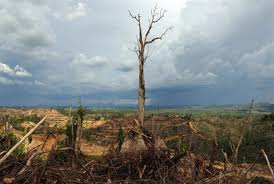
Notably, in spite of the takeover, SunChase Holdings Inc is still run out of the same offices and by the same Management Team established by Chee Siew Yaw before his abrupt departure in 2006. The circumstances that enabled a member of the Management Team to buy out such an enormous multi-million dollar company remain unclear.
Sarawak Report and doubtless the people of Sarawak, would be interested to know whether the Yaw family do in fact retain an interest in SunChase Holdings in the USA. Given the controversy surrounding the legality of the timber licenses issued by the Chief Minister, there is the likelihood that future enquiries that might result in the restitution of some of Sarawak’s lost profits from its many timber concessions. SunChase Holdings in the United States might be a good place to start looking.
